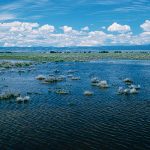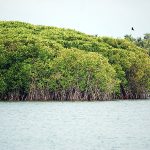What is it?
- Marshlands are a type of wetland characterized by the presence of herbaceous (non-woody) plants such as grasses, reeds, sedges, and rushes.
- Unlike swamps, which are dominated by trees, marshes are open areas that are periodically or continuously inundated with water.
Types of Marshland
- Freshwater Marshes: Found inland and dominated by herbaceous plants, they are often located in floodplains, along rivers and lakes, and in depressions that collect water.
- Saltwater Marshes (Tidal Marshes): Located along coastlines and influenced by tides, these marshes are dominated by salt-tolerant plants like cordgrass and saltmarsh hay.
- Brackish Marshes: Transitional areas between freshwater and saltwater marshes, containing a mix of plant species from both environments.
Functions of Marshlands
- Habitat: Provide critical habitat for wildlife, including many species that are specially adapted to wet conditions.
- Water Filtration: Act as natural filters, trapping sediments and pollutants from runoff, thereby improving water quality.
- Flood Control: Absorb excess rainwater and reduce the speed and impact of floodwaters, helping to prevent downstream flooding.
- Carbon Storage: Store carbon in plant biomass and soil, contributing to carbon sequestration and climate change mitigation.
Threats of Marshlands
- Pollution: Runoff from agriculture, industry, and urban areas introduces pollutants like pesticides, heavy metals, and nutrients, which can degrade water quality and harm wildlife.
- Drainage for Development: Many marshlands are drained for agricultural expansion, urban development, and infrastructure projects, leading to habitat loss.
- Invasive Species: Non-native plants and animals can outcompete native species, disrupting the ecosystem balance.
- Climate Change: Rising sea levels, changing precipitation patterns, and increased frequency of extreme weather events can alter marshland ecosystems and their functions.


